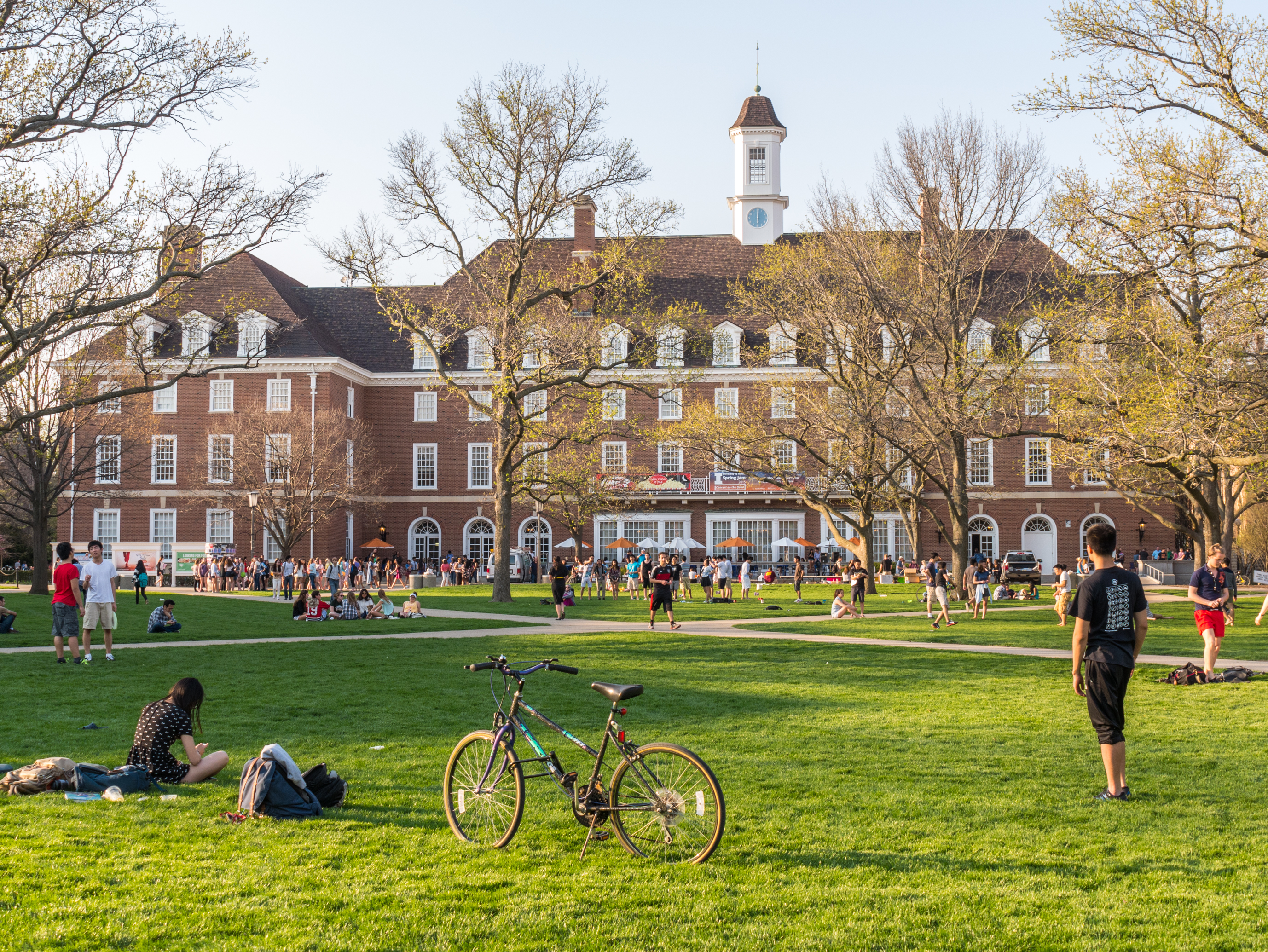Colleges and universities need to be saved, not only from financial ruin, but also, all too often, from themselves.
Long before Donald Trump or Covid 19, the eerie resemblance of American higher education to the old Habsburg Empire was hard to miss. At the top a handful of vintage institutions continued to glitter. They exercised a magnetic attraction on the rest of the world that even intellectual disasters on the scale of the economics discipline before the 2008 financial crisis hardly dented. But most every institution below the royals was at least fraying around the edges. Long before the pandemic hit, many showed clear signs of distress.
The root of that distress is not hard to identify: It is the pressures arising from the decline of the American middle class and the soaring income inequalities of the New Gilded Age. While a few US colleges have lineages stretching back centuries, they and their less venerable competitors dramatically reconfigured themselves during the long boom that followed World War II. Historically rapid economic growth along with major government funding initiatives, such as the GI Bill, post-Sputnik spending on defense and R&D; and Lyndon Johnson’s Great Society fueled a vast expansion of the whole system.
With college degrees the passport to well-paid, stable employment, going to college became the default expectation of middle-class students and parents and the aspiration of many less affluent households. State supported institutions bulked up, but so did most private colleges and universities. Research institutions, private liberal arts colleges, professional schools, state colleges and universities, and junior colleges nearly all added students and faculty. Many also transformed themselves into conglomerates, branching out into wholly new lines of activity and adding layers of administrators.
The fateful fork in the road came in the nineteen seventies, as economic growth slowed and became far more variable. The declines, along with major campaigns for lower taxes, squeezed both federal and state finances. With direct aid from governments constrained, and advances in biotechnology promising high returns, both Democrats and Republicans encouraged colleges and universities to privatize research performed on their campuses and to spin off products to private industry.[i]
As college costs spiraled upward while middle class incomes stagnated, the market for college education stratified more sharply. A handful of private universities and a very few public ones with deep-pocketed alumni spent big to build internationally competitive programs in science, engineering, and professional schools. In a virtuous circle, those successes attracted further outside funding from both government and industry. A few institutions were so successful at this that student tuition eventually became a secondary factor compared to how their endowments fared in the stock markets.
Over time, the search for outside funding turned increasingly desperate as state support continued falling off, especially after economic downturns. State funding now supplies 21% of the budget – a huge decline from the nineteen seventies —-and has been replaced by net tuition revenues which have grown year after year since 1980. [ii]
Permanent faculty are higher education’s institutional memory; they are vital to manage the curriculum in departments and programs, decide who is qualified to teach what in the curriculum, and how students should be assessed. But desperate to save money, colleges and universities steadily chopped back full-time academic positions –from 85% in 1970 to less than 25% today.[iii] Instead they filled more and more teaching slots with adjuncts, who are paid much less. Many, according to a new report, live on incomes of $25,000 or less.[iv] Because the permanent faculty is less than 25% at institutions outside of the top 150 or so ranked public and private colleges, most instruction is now done by part-timers who are given little or no professional guidance about what or how to teach or how to assess students.
Many colleges, including large numbers of state institutions, also turned to recruiting out-of-state students who could pay full cost. They sought to attract students from abroad, including many from China, for the same reason. In large universities, teaching assistants with an uncertain grasp of English often teach many students.
The nature and amount of student services also changed; many schools, for example, found it necessary to add medical, psychological, and other counseling services for non-traditional students. Rising health costs were a constant problem, especially for part timers. Many institutions also poured scarce resources into sports success, believing that would inspire increased alumni contributions. They also competed for affluent students by offering hotel-like amenities, state of the art gyms, and other expensive facilities. It did not help that many heads of colleges aspired to be paid like corporate CEOs.
In the wake of the 2008 financial crisis, the Obama administration was reluctant to help states out of their budget shortfalls, while national Republicans were openly opposed. State support for higher ed plunged to new lows. In most states, it never really came back. In 2017, for example, the largest governmental source of revenues for public higher education, state general appropriations, amounted to $87 billion – $2.2 billion below the level of 2007.
Throughout this long time of troubles, both governments and universities encouraged students and their parents to make up the revenue shortfall by taking on debt themselves. Student private lenders gleefully helped, often at rates that were astonishing even by the standards of deregulated American finance. After 2008, as interest rates fell to historically low levels, some private lenders still tried to charge double digit interest rates for student loans. The national student loan debt has risen to over $1.6 trillion dollars in 2020.[v]
The result has been a slow motion train wreck. The steady growth of a dual economy in the US has made middle-class jobs increasingly scarce and destroyed many previously well-paid, secure jobs. As the Sanders and Warren campaigns made obvious, many students now carry heavy loads of debt when they graduate – if they graduate. Dropout rates, especially of minority students, have soared and many fewer students – again, especially minority students – find college a practical possibility. Rates of college attendance for Black and Hispanic students run far below that of whites, whose rates have also been declining. Whites and Asians earn a college-level credential at rates about 20% higher than Blacks and Hispanics.[vi] At the same time, students with diplomas often cannot find anything resembling an old fashioned entry-level position, because there are so few to be found.[vii]
Now, suddenly, with the Covid 19 pandemic, the long running financial squeeze threatens to turn overnight into genuine insolvency as institutions struggle to figure out how to safely run instructional systems dependent on in-person activities and support systems all too reminiscent of cruise ships. Duke University’s President Vincent Price recently sent the board, faculty, and staff a memo stating that Duke would need to find an additional $150 million to $200 million to get through the upcoming academic year. University of Michigan and Stanford University administrators project losses on a similar scale. Endowments have likely also taken a hit, though the massive Federal Reserve interventions in financial markets has supported portfolios, if not working Americans.
Duke, Michigan, and Stanford, though, are wealthy institutions with established reputations. Many of these, if they must, can operate online for a good while, if not comfortably, and relatively few students will likely fail to show eventually. By contrast, it is painfully obvious that many less well-endowed institutions are grasping at straws to find ways to reopen in person. They fear that students and parents simply will not pay for online instruction at home from less renowned institutions and many need the tuition to survive. In addition, colleges and universities often garner important revenues from student payments for dorm and meal services. More than a few have substantial debts to service.
Brave talk about innovating through various testing regimes is common. Some institutions promise tests to assure safety via robots or other devices that have never been tried on a large scale. Or they talk grandly about how students will agree not to congregate in groups in or out of class. The comparison to US states in the south and west which reopened too early is uncomfortable. Or to Israel, where premature efforts to reopen schools are widely blamed for reigniting Covid.
Earlier federal bailout legislation awarded higher education very modest funding based on the number of Pell Grant awards their students received. (Pell Grants fund low income students; total support amounted to some $14 billion, which spread among the more than 4000 American higher education degree granting institutions is risible.)
Many education leaders are pressing for much larger packages in the next CARES legislative package. Figures of $47 billion or more are being tossed around by groups representing only part of American higher education. There is also discussion of measures protecting universities from at least some liability suits.
Not everyone is on board. A celebrated former president of Harvard known, if guardedly, to be close to the Biden campaign, has proposed that institutions should take advantage of the crisis to accelerate changes that were in train anyway. In his view, that might lead to wider use of online instruction by a few institutions with strong worldwide brand names.[viii] Some of his colleagues are more cautious: they recommend that for only courses in some fields.[ix]
By contrast, the outgoing President of the University of California system recently stated flatly that Massive Open Online Courses (MOOCs) have not worked well. That is our view, with the important qualification that for highly motivated students, in some sharply defined contexts, well designed MOOCs or videotapes can be effective. Absent those, we think that the experience of Princeton and other institutions, where students enrolled in MOOCs stayed away in droves, is likely to be repeated.
We also take very seriously the empirical studies indicating that smaller classes with full time faculty add substantially to student learning. For example, overall scores of one critical thinking test that we think has real merit are highest at institutions with small class sizes.[x] Our conclusion, quite in the tradition of Socrates and classical theories of education, is that personal contacts with teachers play a disproportionate role in inspiring individual intellectual development.
But the key point is this. Larry Summers or the dissenters could be right. Or wrong. That is for the future to decide.
In the meantime, it cannot make sense for the US government to spend trillions of dollars to rescue the financial system, but do virtually nothing for colleges and universities. Allowing the entire higher educational structure to deteriorate is like refusing to wear masks during a pandemic: pointless and self-defeating.
Higher education is a principal avenue for the transmission of human capital and learning to new generations. This makes it essential in today’s digital world in which college graduates will need critical thinking skills to survive. Colleges and universities are also central to serious efforts to rectify inequalities of income and wealth. The notion that affirmative action in a handful of brand name institutions could substitute for serious efforts to broaden higher education for citizens in the twenty-first century is absurd. For minority students and poor whites alike, state universities and colleges, including community colleges, are indispensable as pathway to the middle class in a globalized context. If hundreds of colleges close or scale back over the next few years, then higher education in our New Gilded Age will go right back to where it was in the original Gilded Age.
We would not, however, favor no-strings federal aid to universities any more than we favor that for banks. Institutions getting bailed out should have to commit to raising the percentage of full time faculty over, say, five years, back to at least 40% of all instructors. We also think that both students and faculty should be represented on the boards of all institutions to reduce wishful thinking by administrators about the real conditions of campus life. In the longer run, institutions need to sweep out layers of expensive bureaucracies with modern data systems using state of the art new technologies.
Though the subject is too big for a piece like this, what we regard as the best evidence about how well institutions actually teach critical thinking indicates real gaps even at many very high ranking institutions. As part of any bailouts, longer term efforts to compile real evidence about value added should be required in place triumphal recitations of test scores of entering students or illustrious alumni – or even how much money graduates make. We are not guessing when we say that many institutions have fiercely resisted such moves. But we are very encouraged that in a handful of institutions where such efforts have been tried, decently funded programs for disadvantaged student have had rousing success.[xi]Colleges and universities need to be saved, not only from financial ruin, but also, all too often, from themselves.
Roger Benjamin was president of the Council for Aid to Education from 2005 to 2019 and was formerly provost of the University of Minnesota and the University of Pittsburgh.
Thomas Ferguson is INET’s Director of Research. He served formerly on the Public Advisory Committee, Quality Initiative, Council for Aid to Education and was also Senior Associate Provost at the University of Massachusetts, Boston
[i] The literature is large, but see the very lucid summary in Dickson, David, and David Nobel. 1981. “By Force of Reason: The Politics of Science and Technology Policy,” in Ferguson, Thomas and Rogers, Joel, eds, The Hidden Election. New York: Random House.
[ii] Rick Seltzer (2019). “Dualing Conclusions on State Disinvestment.” Inside Higher Education, October 24; Pew Charitable Trusts. 2019. “Two Decades of Change in Federal and State Higher Education Funding. Issue Brief,” October 15.
[iii] Finkelstein, Martin, Valerie Conley, and Jack H. Schuster. 2016. The Faculty Factor: American Academy in a Turbulent Era. Baltimore, MD: Johns Hopkins University Press.
[iv] Flaherty, Colleen. 2020. “New Report: Many Adjuncts Make Less Than $3,500 Per Course And Live In Poverty.” Inside Higher Education, April 20.
[v] National Student Loan Data Systems. 2020. U.S. Department of Education: Washington, D.C.
[vi] National Center for Education Statistics. 2018. Washington, D.C.: U.S. Department of Education.
[vii] The problem is serious and afflicts all graduates, but once again hits minorities even harder, especially Black graduates. See Nichols, Andrew Howard and Anthony, Marshall, Jr. 2020. Graduation Rates Don’t Tell the Full Story: Racial Gaps in College Success Are Larger Than We Think. Educational Trust Washington, D.C. https://edtrust.org/resource/graduation-rates-dont-tell-the-full-story-racial-gaps-in-college-success-are-larger-than-we-think/
[viii] See “Perspectives on the COVID-19 Pandemic: A Conversation with Larry Summers,” April 20, 2020; https://www.hbs.edu/about/video.aspx?v=1_12251osx Accessed July 21, 2020. See the discussion at about 53 minutes and later.
[ix] Rogoff, Kenneth. July 6, 2020. “Will Universities Learn From Lockdowns.” Project Syndicate, https://www.project-syndicate.org/commentary/will-covid19-trigger-technological-disruption-of-higher-education-by-kenneth-rogoff-2020-07
[x] See the report Catalyst for Change: The CIC/CLA Consortium, by David Paris, 2011 sponsored by the Council of Independent Colleges, a consortium of several hundred small liberal arts colleges. It demonstrates the importance of small class sizes for the development of critical thinking skills. A number of studies using assessments of non-profit assessment organizations show that the value added growth of student learning is highest in institutions that educate their students in small classes. See Steve Klein, David Freedman, Richard Shavelson, and Roger Bolus. 2008. “Assessing School Effectiveness,” Evaluation Review. January, 32 (6): 511-25; cf Jeffrey Steedle and Martin Bradley, 2012. “Selecting Value-Added Models for Postsecondary Institution Assessment, Assessment and Evaluation in Higher Education, 37 (6): 637-652.
Note that we are not suggesting that individual student assessments should rest mainly on test scores; that is a different question and test inaccuracies for individuals are well known pitfalls.
[xi] The Accelerated Study in Associate Degree program (ASAP) at the City University of New York is often seen as a national model for what can work. See Barsay, Jill. 2020. Ohio Import of NYC Community College Program Based Rigorous 3-Year Test. Hechinger Report: New York: May 18.







